Search
To search for an exact match, type the word or phrase you want in quotation marks.
A*DESK has been offering since 2002 contents about criticism and contemporary art. A*DESK has become consolidated thanks to all those who have believed in the project, all those who have followed us, debating, participating and collaborating. Many people have collaborated with A*DESK, and continue to do so. Their efforts, knowledge and belief in the project are what make it grow internationally. At A*DESK we have also generated work for over one hundred professionals in culture, from small collaborations with reviews and classes, to more prolonged and intense collaborations.
At A*DESK we believe in the need for free and universal access to culture and knowledge. We want to carry on being independent, remaining open to more ideas and opinions. If you believe in A*DESK, we need your backing to be able to continue. You can now participate in the project by supporting it. You can choose how much you want to contribute to the project.
You can decide how much you want to bring to the project.
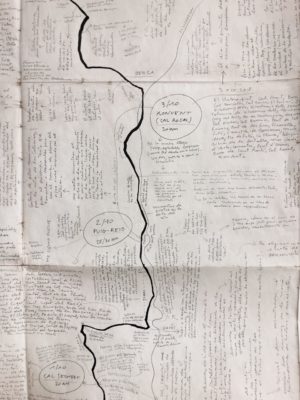
The act of walking entered into artistic territory by spending soles for a Paris, the one of the twenties, with many corners to explore. Dadaist Machetes cleared paths, and later, lyricists and Situationists would also act as cicerones of an alternative city to tourist routes and organized leisure. A century has gone by and the cities are surrealistic in themselves, which sums up a phrase of Koolhaas that seems to emulate Lautréamont’s famous formula about crazy fortuitous encounters. For Koolhaas the contemporary city is the result of the encounter “between the escalator and the air conditioning, conceived in an incubator in Pladur”.
Predictable, vigilant and forgetful as cities are today, those who incorporate the accidental into their walk, freedom and memory tend to prefer rural geography as a territory to be explored.
It was with his project En frontera (Bcn Producció 2017) where Marco Noris discovered in the transhumance the spring that activated a series of subtle relationships between history linked to a place and the intense experience of a nature that remains unperturbed by human disruptions.
Noris is a methodical artist. He does not get lost in “psychogeographical drifts” or reinvent street names according to his mood as the Situationists did. The real toponymy of the places is what interests him, since the names of ravines and valleys always shelter curious stories, sediments of memory laminated with legends from whose threads Marco starts to draw his own maps.
From the landscape notes he took while walking along the Pyrenean border markers to the monochrome reductions on fragile supports that resulted from his subsequent pilgrimages, Noris’ painting has been stripped of all other representation, of any frame. There is no distance in walking. Motivated by the desire to connect old and new feelings of uprooting, he himself wanted to experience with his body the frontier-being. And from the border-being he passed to the road-being: in “Entrega” (a walking route that united art centers from different Catalan regions) he did not need any other motivation than the very idea of becoming one with the walk.
Noris discovered a certain sacredness in walking, as the names of some of his works (“entrega (delivery)”, “sudario (shroud)”…), or the title of his current exhibition: “Nel lieve sovrapporsi di cielo e terra” (Pyramid, Sept-Nov. 2020), attest. Many of the objects and papers on display look like fossils or antediluvian scrolls. They give the impression that they will fall apart between the fingers if we dare to touch them.
The ungraspable horizon referred to in the title, which materializes as a kind of fata morgana in some of Noris’ abstract compositions, reminds us of the exaltation of spirit of the one for whom there was no difference between walking, thinking and existing, Henry David Thoreau: “nature, with its subtle magnetism, impels us to take that path which we have never taken in the real world and which is the perfect symbol of the one we would like to travel in the ideal and inner world; and if we sometimes find it difficult to choose its direction, it is -surely- because it does not yet have a clear existence in our mind”.
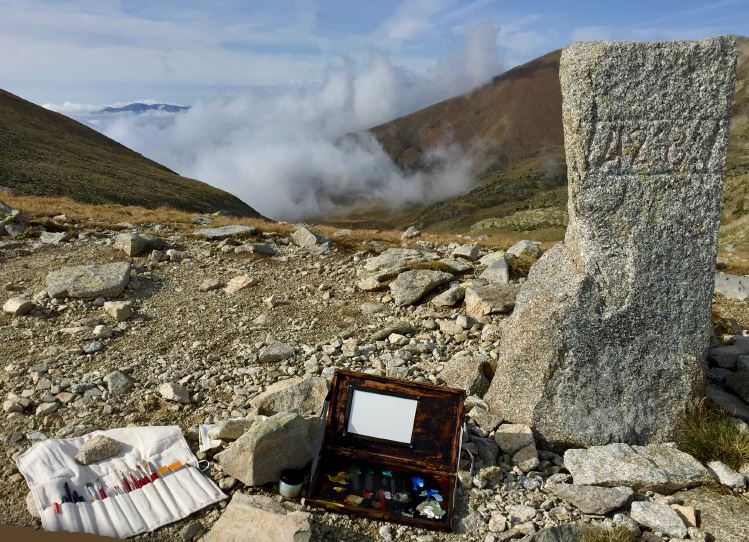
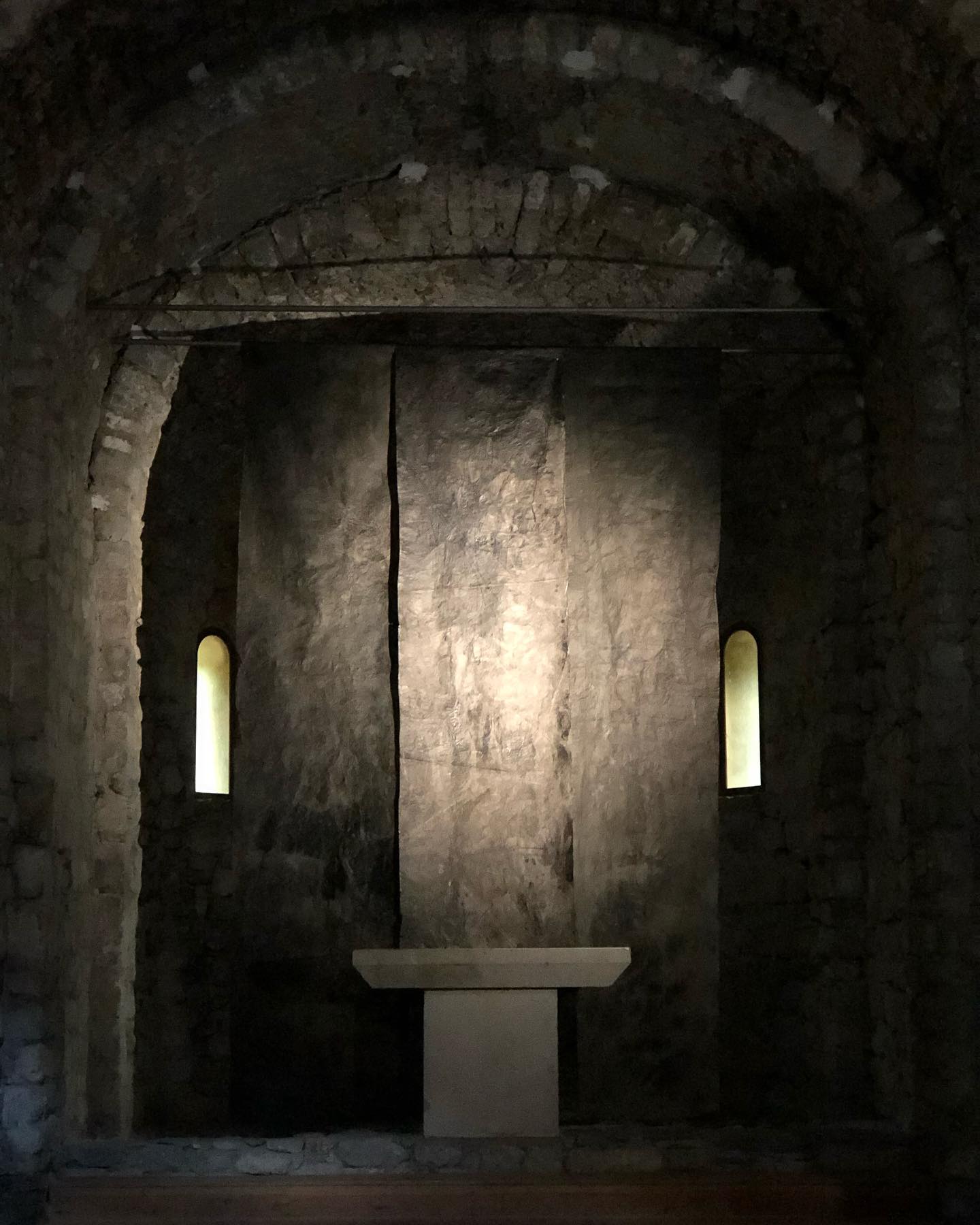

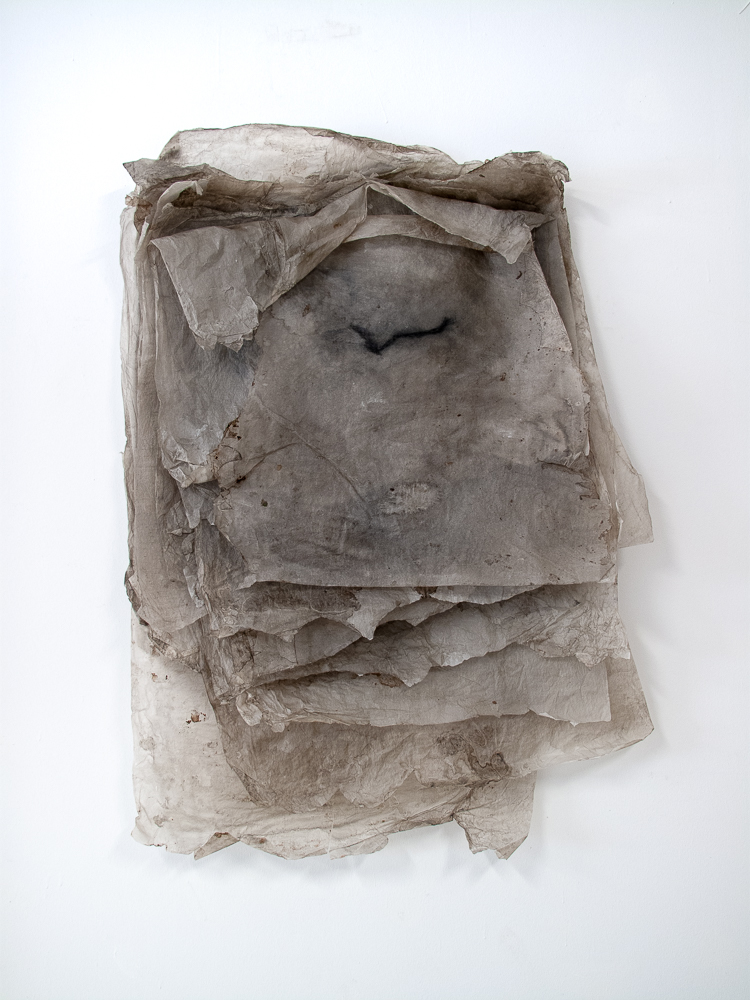

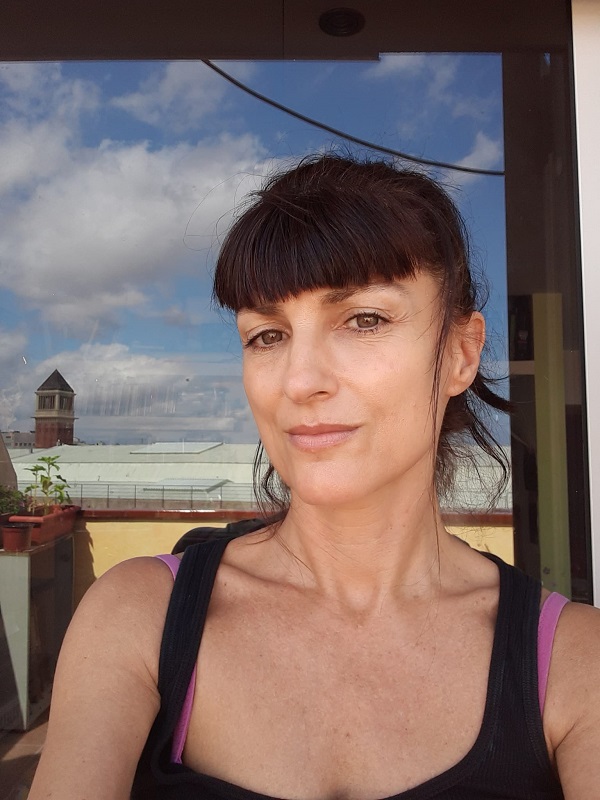
Anna Adell is an essayist and art historian.”Atrapados por Saturno: imaginarios recientes de la melancolía” (Casimiro, 2020) is her latest published book, which was preceded by “Creación y pensamiento hacia un ser expandido” (Trea) and “El arte como expiación” (Casimiro). Other articles by the author in Le bastart: http://lebastart.com/
"A desk is a dangerous place from which to watch the world" (John Le Carré)